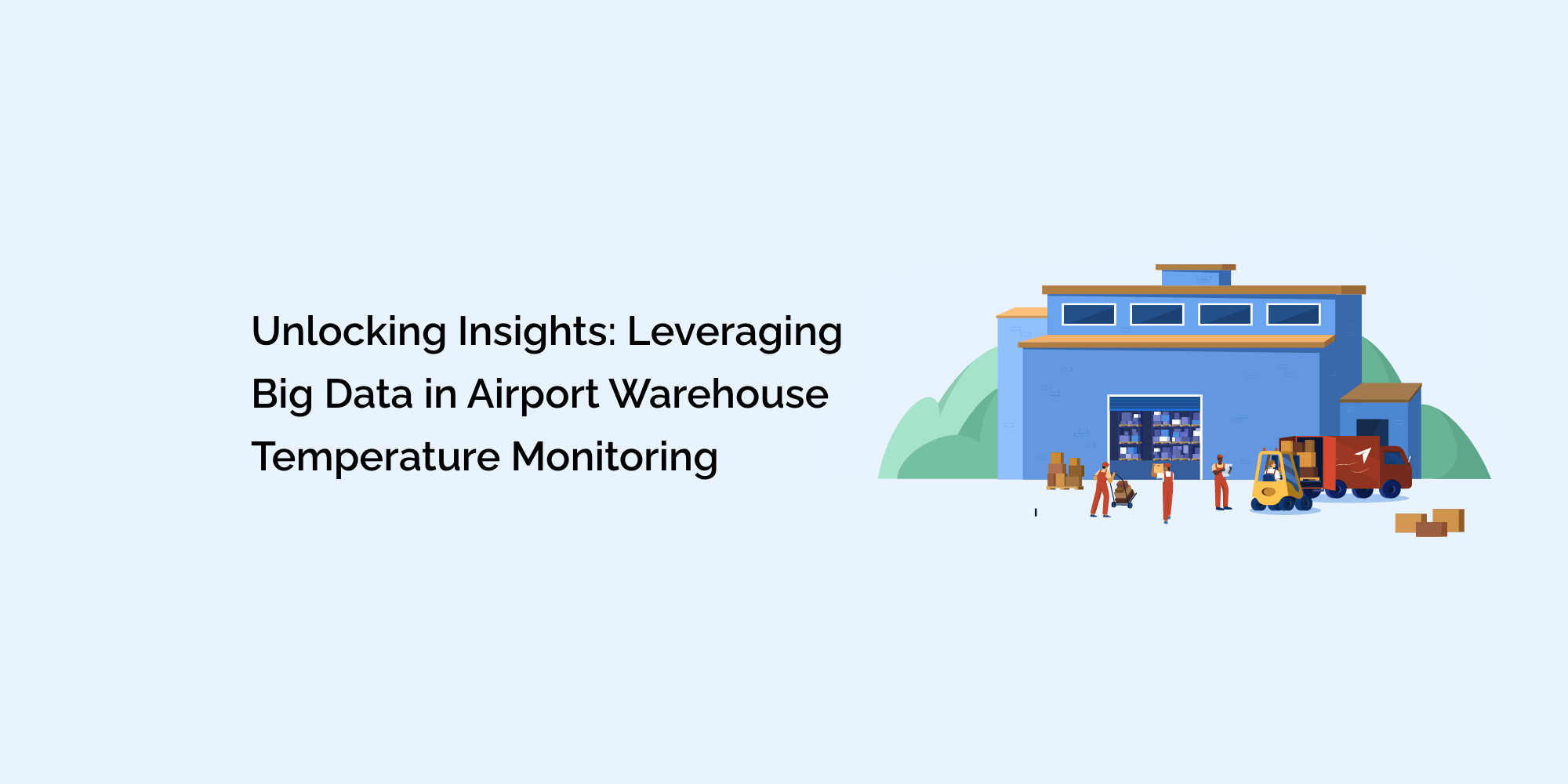Airport warehouses serve as critical hubs in the global supply chain, facilitating the efficient movement of goods and cargo. Among the most crucial aspects of warehouse operations is temperature monitoring, especially for temperature-sensitive products like pharmaceuticals, perishable goods, and electronics.
Traditional temperature monitoring systems provide valuable data, but as technology advances, so does the potential for data collection and analysis. Big data, with its ability to process vast amounts of information, is revolutionizing temperature monitoring in airport warehouses.
In this blog, we will explore the concept of leveraging big data for temperature monitoring, its benefits, implementation challenges, and how this approach unlocks valuable insights that drive efficiency, safety, and compliance.
The Power of Big Data in Temperature Monitoring
1.1 Defining Big Data
Big data refers to datasets that are so large and complex that traditional data processing applications are inadequate for handling them. It encompasses various types of data, including structured, semi-structured, and unstructured data. In the context of airport warehouse temperature monitoring, big data includes real-time temperature readings, historical temperature records, weather data, sensor data, and more.
1.2 Importance of Big Data in Temperature-Sensitive Cargo
Temperature-sensitive cargo, such as pharmaceuticals and perishables, requires stringent temperature control throughout the supply chain. Big data analytics offers the capability to capture, store, and analyze vast amounts of temperature-related information. This enables warehouse managers to make data-driven decisions, optimize temperature control systems, and prevent costly temperature excursions.
Benefits of Leveraging Big Data in Airport Warehouse Temperature Monitoring
2.1 Improved Real-Time Monitoring
Big data analytics allows for real-time monitoring of temperature conditions within the warehouse. Advanced sensors collect continuous data, providing insights into temperature trends and fluctuations. Real-time monitoring ensures prompt action in response to deviations, reducing the risk of product spoilage.
2.2 Enhanced Predictive Analytics
By analyzing historical and real-time data, big data enables predictive analytics to forecast temperature trends and identify potential anomalies. Warehouse operators can proactively address temperature issues before they escalate, minimizing the risk of damage to temperature-sensitive cargo.
2.3 Data-Driven Decision Making
Leveraging big data empowers warehouse managers to make informed decisions based on comprehensive insights. They can optimize temperature settings, warehouse layouts, and logistics strategies to ensure the best possible conditions for temperature-sensitive cargo.
2.4 Compliance with Regulatory Standards
Airport warehouses handling temperature-sensitive goods are subject to strict regulatory requirements. Big data analytics ensures compliance by providing accurate and detailed temperature records, making audits and reporting more efficient and reliable.
Challenges in Implementing Big Data for Temperature Monitoring
3.1 Data Integration
One of the primary challenges in leveraging big data is integrating data from various sources, such as different sensors, warehouses, and third-party partners. A robust data integration strategy is essential to ensure seamless data flow and eliminate data silos.
3.2 Data Security and Privacy
Handling vast amounts of sensitive temperature data raises concerns about data security and privacy. Protecting data from cyber threats, ensuring compliance with data protection regulations, and maintaining the confidentiality of proprietary information are critical considerations.
3.3 Data Storage and Scalability
Big data requires significant storage capacity and scalable infrastructure. Implementing a data storage solution capable of handling the ever-growing volume of temperature-related data is essential for the success of the initiative.
3.4 Data Quality and Cleansing
Ensuring data accuracy and quality is paramount in big data analytics. Data cleansing processes must be implemented to remove duplicate, incomplete, or erroneous data, ensuring that the analysis is based on reliable information.
Strategies for Leveraging Big Data in Airport Warehouse Temperature Monitoring
4.1 Advanced Sensor Technology
Deploying advanced sensor technology is the foundation of leveraging big data in temperature monitoring. Internet of Things (IoT) sensors and devices can collect real-time temperature data and transmit it to central data repositories for analysis.
4.2 Cloud-Based Data Storage and Analytics
Cloud computing provides the scalability and flexibility required for big data analytics. Storing temperature data in cloud-based platforms allows for real-time access, seamless data integration, and efficient data processing.
4.3 Machine Learning and Artificial Intelligence
Machine learning algorithms can process vast amounts of temperature data to identify patterns and predict potential temperature excursions. Artificial intelligence enhances the accuracy and efficiency of predictive analytics, enabling data-driven decision-making.
4.4 Collaborative Partnerships
Collaborating with data analytics experts and technology providers can streamline the implementation of big data solutions. Partnering with industry leaders can provide access to cutting-edge technologies and expertise in data analysis.
Case Studies: Successful Implementation of Big Data in Temperature Monitoring
5.1 Case Study 1: Pharmaceutical Cold Chain Optimization
A leading pharmaceutical company implemented big data analytics in its airport warehouse temperature monitoring system. By leveraging real-time temperature data from IoT sensors, the company achieved better visibility and control over its cold chain logistics. Predictive analytics allowed proactive temperature adjustments and rapid response to potential excursions, resulting in reduced product loss and enhanced compliance with regulatory standards.
5.2 Case Study 2: Perishable Goods Inventory Management
A global perishable goods distributor integrated big data analytics into its temperature monitoring system. Real-time temperature data from multiple warehouses were collected and analyzed to optimize inventory management. By identifying trends in temperature fluctuations and demand patterns, the company achieved significant reductions in inventory waste and spoilage, leading to substantial cost savings.
Conclusion
Leveraging big data in airport warehouse temperature monitoring is a game-changing strategy. By harnessing the power of real-time data, predictive analytics, and data-driven decision-making, airport warehouses can enhance their temperature control practices, improve compliance with regulatory standards, and ensure the integrity of temperature-sensitive cargo.
Despite the challenges of data integration, security, and scalability, the benefits of big data analytics make it a worthwhile investment for airport warehouses seeking to optimize their operations and maintain a competitive edge in the global supply chain.
As technology continues to evolve, big data will play an increasingly critical role in shaping the future of temperature monitoring in airport warehouses.








